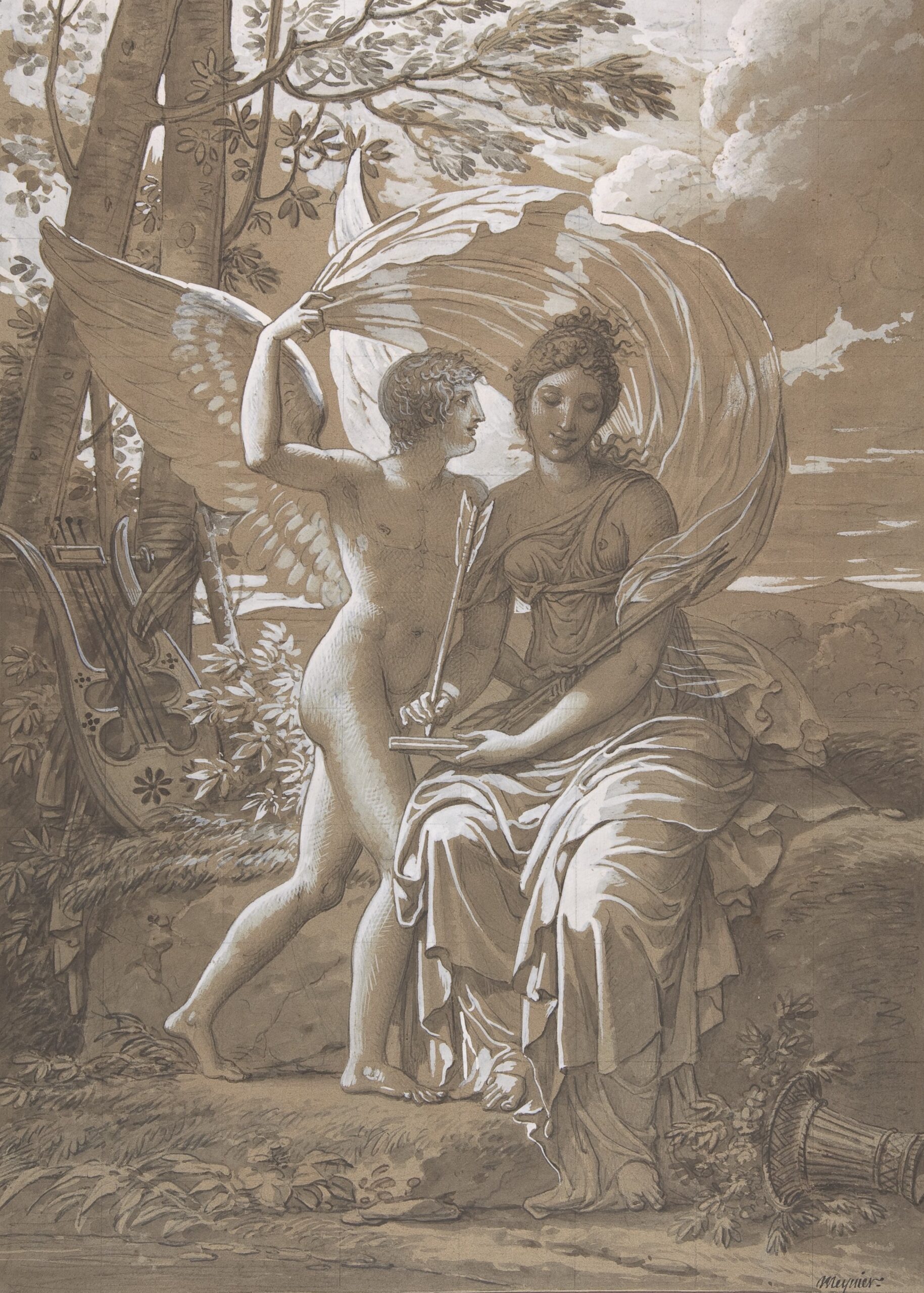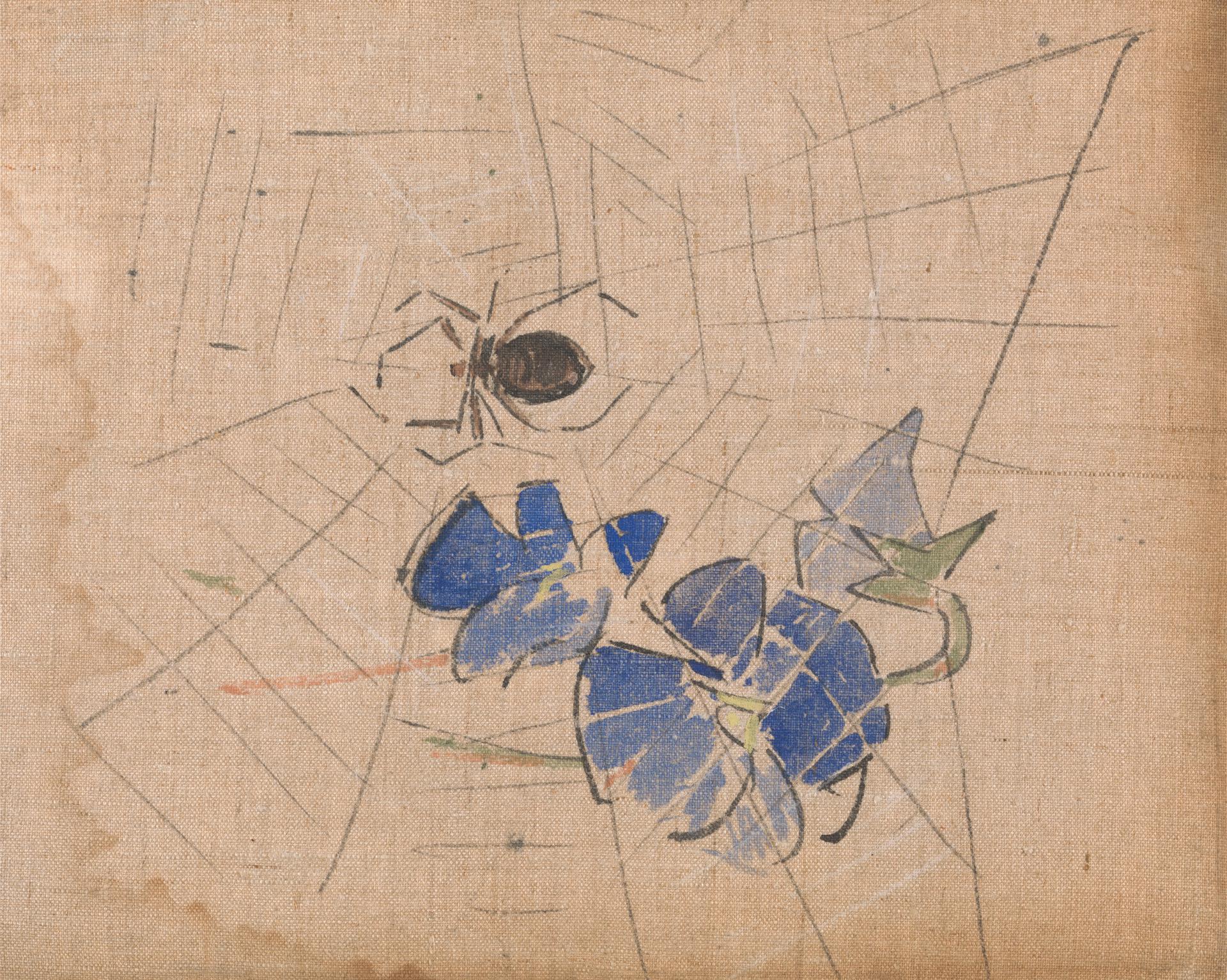Last week my husband and I were having breakfast with our seven-month-old baby, sticking bits of fruit into her mouth and prattling inane words of love. For a couple of months now the baby has been smiling big, open-mouthed smiles that show her two teeth and animate her entire body; her feet kick and her chubby hands wave and the recipient feels the smile like the warmth of a cheerful little sun on a minor planet. “Pretty baby,” my husband said to her that morning, when she beamed thus at him. “What a pretty little girl.”
There is a common evocation of beauty during the very new newborn period. Babies emerge as slightly mottled fruits that have been sitting in their syrup too long. But if you are very lucky and the things happen that are supposed to happen, they unfurl and dry off and fill out and within a few days or weeks they’ve become those velvet-skinned, bright-eyed beings in the first and most tender season of human beauty.
I never recoiled, in that first season, to hear the nice people on the bus say “beautiful baby,” to us in reverent tones. It’s a thanksgiving for safe passage, a prayer for all new defenseless things. In any case, the adjective is usually invoked without its invoker seeing much more than a scalloped ear or a tiny scrumpled face. And even if the baby alarms you with its rawness, “beautiful baby” is really the only thing to say. The new mother doesn’t need to hear “Nice prune,” or “You must have squeezed ‘er good coming out.”
But after a few months have passed, when the word “newborn” must be set aside with the tiny hats and receiving blankets and impossibly small onesies, faint suggestions of the adult visage emerge. Friendly strangers and the baby’s own parents and relatives eagerly fixate upon recognizable features. And if you have a girl, the specter of beauty, or the looking-for-it, begins to hover.
 Girl babies grow and the observations about their looks are freely traded — comments about eyes and future heartbreaking. At a certain point a more furtive category of looking makes itself felt. When Cal Stephanides, the hero/ine of Jeffrey Eugenides’s wonderful novel Middlesex recalls his dark-eyed, aquiline-nosed loveliness as a young girl, it is not the beauty that is remembered so much as the world’s response to it:
Girl babies grow and the observations about their looks are freely traded — comments about eyes and future heartbreaking. At a certain point a more furtive category of looking makes itself felt. When Cal Stephanides, the hero/ine of Jeffrey Eugenides’s wonderful novel Middlesex recalls his dark-eyed, aquiline-nosed loveliness as a young girl, it is not the beauty that is remembered so much as the world’s response to it:
I can only remember a time when the world seemed to have a million eyes, silently opening wherever I went. Most of the time they were camouflaged, like the closed eyes of green lizards in green trees. But then they snapped open — on the bus, in the pharmacy — and I felt the intensity of all that looking, the desire and the desperation.
When Callie enters adolescence — before her male secondary sexual characteristics manifest — she undergoes a subtle transformation that likewise transforms her way of being in the world:
To paraphrase Nietzsche, there are two types of Greek: the Apollonian and the Dionysian. I’d been born Apollonian, a sun-kissed girl with a face ringed with curls. But as I approached thirteen a Dionysian element stole over my features. My nose, at first delicately, then not so delicately, began to arch. My eyebrows, growing shaggier, arched, too. Something sinister, wily, literally ‘satyrical’ entered my expression.
Like most brilliant novels, Middlesex manages to describe a very particular set of circumstances — the sex misidentification and eventual transformation of Callie to Cal Stephanides — in a way that highlights their universality. When Callie describes her turn to the Dionysian, she is contrasting her elfin looks with those of the “normal” girls growing breasts all around her. But the feeling she described is familiar to me from girlhood — that feeling of change from being a beautiful baby, petted and cooed over, into something crooked and frizzed and untoward, requiring braces and other, more secret interventions.
 And before long, the eyes are back. If you are Callie, switched over to Cal, they come from a predatory subculture that looks for runaway waifs in highway truck stops. If you are a young woman, your new, marginally adult female body becomes public property, free for comment by men and other women alike. Lest you think I’m in the middle of an extended humblebrag about my own looks, recall The Blind Assassin, wherein Margaret Atwood’s wizened narrator identifies the appeal of very young women, whether they are celebrated as beauties or not: “The three of them were beautiful, in the way all girls of that age are beautiful. It can’t be helped, that sort of beauty, nor can it be conserved; it’s a freshness, a plumpness of the cells, that’s unearned and temporary, and that nothing can replicate.”
And before long, the eyes are back. If you are Callie, switched over to Cal, they come from a predatory subculture that looks for runaway waifs in highway truck stops. If you are a young woman, your new, marginally adult female body becomes public property, free for comment by men and other women alike. Lest you think I’m in the middle of an extended humblebrag about my own looks, recall The Blind Assassin, wherein Margaret Atwood’s wizened narrator identifies the appeal of very young women, whether they are celebrated as beauties or not: “The three of them were beautiful, in the way all girls of that age are beautiful. It can’t be helped, that sort of beauty, nor can it be conserved; it’s a freshness, a plumpness of the cells, that’s unearned and temporary, and that nothing can replicate.”
In this conception of beauty, we might see parallels to the reverence for the newborn — the instinctive and uncheckable response of humanity to its own most new and unsullied, and then its most fertile, members. You might say that there’s a purity to this response, the way that there’s a purity, at the most basic level, to youth. But as Atwood’s narrator goes on to point out, there is the essential beauty of youth, and then there is the ideal of beauty that interferes with a woman’s view of herself: “None of them was satisfied with it, however; already they were making attempts to alter themselves into some impossible, imaginary mould, plucking and pencilling away at their faces. I didn’t blame them, having done the same once myself.”
 In On Beauty and Being Just, Elaine’s Scarry’s short, poetic refutation of the “political critique of beauty” — and the title inspiration for Zadie Smith‘s On Beauty— Scarry states that “the moment of perceiving something beautiful confers on the perceiver the gift of life.” Her “something,” in this formulation, can be a person, or not a person: “faces, flowers, bird-songs, men, horses, pots, and poems.” Human beauty is merely one “site” of beauty; it has, in Scarry’s reckoning, “site-specific” attributes that cause us to keep it separate from pots and bird-songs, and in doing so wander into ontological errors about beauty. These errors, Scarry argues, make people want to expel beauty — that is, the acknowledgment and discussion of beauty — from our classrooms and lecture halls.
In On Beauty and Being Just, Elaine’s Scarry’s short, poetic refutation of the “political critique of beauty” — and the title inspiration for Zadie Smith‘s On Beauty— Scarry states that “the moment of perceiving something beautiful confers on the perceiver the gift of life.” Her “something,” in this formulation, can be a person, or not a person: “faces, flowers, bird-songs, men, horses, pots, and poems.” Human beauty is merely one “site” of beauty; it has, in Scarry’s reckoning, “site-specific” attributes that cause us to keep it separate from pots and bird-songs, and in doing so wander into ontological errors about beauty. These errors, Scarry argues, make people want to expel beauty — that is, the acknowledgment and discussion of beauty — from our classrooms and lecture halls.
It was this current against which On Beauty and Being Just was penned. A major beef of the anti-beauty brigade, says Scarry, is the “gaze” (as in “the male gaze”) — the idea that “when we stare at something beautiful, make it an object of sustained regard, our act is destructive to the object.” Scarry argues that it is a mistake to take this negative, “site-specific” byproduct of human beauty and apply it to the entirety of the humanities, or to “a mourning dove, or a trellis spilling over with sweet pea, or a book whose pages are being folded back of the first time.” According to Scarry, the rejoicing in the beauty of our little baby is motivated by the same benevolent and generative impulse that causes people to “get upset about the disappearance of kelp forests they have never even heard of” — a net positive.
 Scarry’s book is a work of philosophy, a discipline in which I am not at home, and she writes in theorems, which are likewise alien. It is also not addressing itself to the problems of female subjugation, but to the role of aesthetics in scholarship. In one sense I found On Beauty and Being Just to be a sort of refreshing bath for the mind; it sluiced away the noise and arterial plaque of the day-to-day and affirmed, for example, my love of books or paintings. But I’m a woman, and not a pot or a bird-song, and as such I have a special relationship to those “site-specific” problems of human beauty, the pursuit of which makes Atwood’s cellularly plump sprites whittle away at themselves. Site-specific things are on my mind right now, more than university debates between desconstructivists and positivists. People who have grievances dislike for their grievances to be disappeared by thought-exercises, even highly successful and elegantly composed ones.
Scarry’s book is a work of philosophy, a discipline in which I am not at home, and she writes in theorems, which are likewise alien. It is also not addressing itself to the problems of female subjugation, but to the role of aesthetics in scholarship. In one sense I found On Beauty and Being Just to be a sort of refreshing bath for the mind; it sluiced away the noise and arterial plaque of the day-to-day and affirmed, for example, my love of books or paintings. But I’m a woman, and not a pot or a bird-song, and as such I have a special relationship to those “site-specific” problems of human beauty, the pursuit of which makes Atwood’s cellularly plump sprites whittle away at themselves. Site-specific things are on my mind right now, more than university debates between desconstructivists and positivists. People who have grievances dislike for their grievances to be disappeared by thought-exercises, even highly successful and elegantly composed ones.
 And in my site-specificity, I can rejoice in the beauty of the kelp, but fear the implications of human beauty. Beauty obligates, either in its presence — wherein it is the obligation of the beautiful one to be looked-upon, and to retain her beauty — or in its absence, in which case it must be perpetually sought. In The House of Mirth, Lily Bart’s penniless mother reminds her daughter of this obligation:
And in my site-specificity, I can rejoice in the beauty of the kelp, but fear the implications of human beauty. Beauty obligates, either in its presence — wherein it is the obligation of the beautiful one to be looked-upon, and to retain her beauty — or in its absence, in which case it must be perpetually sought. In The House of Mirth, Lily Bart’s penniless mother reminds her daughter of this obligation:
Only one thought consoled her, and that was the contemplation of Lily’s beauty. She studied it with a kind of passion, as though it were some weapon she had slowly fashioned for her vengeance. It was the last asset in their fortunes, the nucleus around which their life was to be rebuilt. She watched it jealously, as though it were her own property and Lily its mere custodian; and she tried to instil into the latter a sense of the responsibility that such a charge involved.
In Scarry’s section on the effect of the “gaze,” she argues, rather speciously, that the gazer is as affected by the gazing as the gazee: “It is odd that contemporary accounts…place exclusive emphasis on the risks suffered by the person being looked at.” After all, she points out, Plato sees a beautiful boy and “shudders and shivers.” Dante Alighieri, laying eyes on Beatrice, feels his “senses go into a huddle.”
And those things do sound hard, but I doubt that two drunken 20-something men ever crabwalked over to 14-year-old Dante and his buddy on the metro and argued freely over which one was “the hot one.” I doubt one of Plato’s male friends told him when he was 15 that “some of the boys in school think you’re really ugly, but some of them think you’re really hot.” When Dante was in college and unhappy and padded with Keystone light and cheeseburgers, it’s unlikely that a male visitor to his room looked at his prom photo and marveled at how hot he “used to be.” Plato didn’t try Zumba and Body Jam and Cardio Kickboxing and Barre Method and Dailey Method and Cardiobarre, or give up beer for months before his wedding. Dante never sorrowed over the absence of his thigh gap, or purchased Groupons for laser hair removal and teeth whitening.
To conflate human beauty with rape is to make the same error as conflating rape with sex; rape is about power and ownership and rage. But all of these things are knotted together in a way that makes it difficult to disentangle the skeins. The artist Eric Gill wrote that “the beautiful thing is that which, being seen, pleases, and it is man that is pleased.” You know what else Eric Gill did? Molested two of his daughters. You know who else “shivered and shook” from the effects of his gazing? Humbert fucking Humbert.
But back to my baby. It’s currently my job, along with her father, to mediate the world for her until she’s old enough to do it herself. So I’m, obviously, her gravest liability, the one most likely to do damage by loading her up with a bunch of my own baggage. And she is a lovely little baby, with big blue eyes, eyes with no bearing on her father’s brown or my own brindled orbs. I exhort her father not to call her pretty, but I look at her and find myself knocking wood, saying mashallah to ward off the evil eye in a way that is in itself a recognition of beauty.
But I want her never to feel that she is with all of womanity on a ladder that equates beauty with worth. I want her never to join the oppressors by talking casually about her friends’ looks, or to instinctively perform a half-predatory, half-defensive assessment of every other woman within a 100-yard radius. And yet I want her to appreciate the many modes of human beauty — not only the boobs and butts and legs of Garry Winogrand‘s deceptively titled Women are Beautiful, but the unexpected lines of an eyebrow or a hand. I want her to feel unencumbered by anyone’s opinion of her beauty or lack thereof. And yet I also want her to feel beautiful, to wear whatever she wants, to luxuriate in a sense that her chosen mate finds her irresistible, to never fear a dressing room or bathing suit or florescent light.
And I want somehow for all this to be accomplished without conferring those heavy, killing, Lily Bart obligations.
So that morning at breakfast, I panicked and chastised my husband for an innocent remark, one that people will make again and again about my baby, as they will do about any woman’s baby. And then I fumbled around in my psyche and pulled out something worn and démodé — highly problematic, in its way, but functional and attractive, like an ivory crochet hook or a whalebone stay. I looked at my seven-month-old and spoke into her uncomprehending face that almost-true thing that people have only ever said to women: “Pretty is as pretty does.”
Image Credit: Unsplash/Nyana Stoica.











